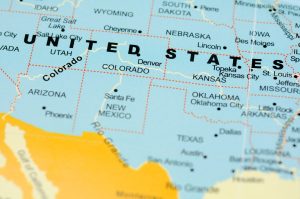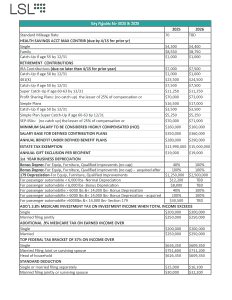The rise of remote and hybrid work has made it easier than ever to hire talent across state lines—but it’s also created a web of tax complexities for employers. Multi-state payroll taxation is one of the most misunderstood and overlooked areas of compliance, and getting it wrong can result in penalties, unexpected tax bills, and frustrated employees.
In this blog, we break down how state payroll taxation works when your employees live or work outside your company’s home state—and what steps you can take to stay compliant.
State Payroll Taxation: More Than Meets the Eye
When it comes to payroll taxes, the key questions are:
- Where does the employee live?
- Where do they physically perform their work?
Most states require employers to withhold state income taxes based on where the employee performs their services—not necessarily where the employer is located. However, this simple rule becomes more complicated with remote work, frequent travel, or multiple work locations.
In addition to income tax withholding, employers must also pay attention to state-specific payroll obligations like unemployment insurance, disability insurance, and paid family leave contributions (depending on the state).
Remote Work and the Employer’s Nexus
Hiring an employee in a different state—or allowing an existing employee to work remotely from one—can trigger a legal presence in that state, nexus. Once nexus is established, your business may be subject to new tax obligations, including:
- State income tax withholding
- State unemployment insurance (SUTA)
- Business registration and licensing requirements
Nexus can be triggered by a single remote employee working consistently in another state, even if your company has no office or other operations there.
Where Should You Withhold State Income Taxes?
As a general rule, employers must withhold income taxes in the state where the employee physically works. This applies even if your business is headquartered elsewhere.
But things get complicated when:
- Employees split time between multiple states.
- Employees work remotely from one state but occasionally travel to another.
- States have unique rules that conflict with others.
In most cases, if the employee works remotely full-time from their home in State A, then State A is where you must withhold taxes—even if your business is in State B.
Reciprocal Agreements Can Simplify Tax Withholding
Some states have reciprocal agreements that allow residents of one state to work in another without paying taxes to both. In these cases, the employee only pays taxes to their home state.
For example:
- A New Jersey resident working in Pennsylvania (and vice versa) is only taxed in their home state.
- Employees must file a non-residency certificate with the employer to take advantage of reciprocity.
However, not all neighboring states have these agreements, so always check the rules before making assumptions.
Common Multi-State Scenarios and How to Handle Them
Let’s look at a few common situations:
1. Employee lives in one state and works remotely from home.
Withhold taxes in the state where they work (their home state), not the company’s state.
2. Employee works in multiple states.
You may need to allocate income between states and withhold accordingly. This often requires consulting a tax advisor.
3. Company has employees in several states.
You’ll need to register in each state where you have employees and follow each state’s rules for withholding, unemployment tax, and reporting.
4. Hybrid workers (office + home).
Determine the primary work location and consult both states’ laws to avoid double taxation or missed obligations.
Don’t Forget About State Unemployment Insurance (SUTA)
State unemployment taxes are typically paid to the state where the employee’s work is localized. The U.S. Department of Labor provides a Localization of Services Test to determine which state is appropriate, usually based on where most work is performed and where the base of operations is located.
In some states, like California, you may also need to pay into state disability insurance or family leave programs.
How to Stay Compliant: Best Practices for Employers
- Track employee work locations: Require employees to update their address and any work location changes.
- Register in new states: Don’t wait—states expect registration when you begin payroll in their jurisdiction.
- Stay current on tax laws: Tax rules change often; assign someone to monitor updates or work with a trusted payroll advisor.
- Use payroll software with multi-state support: Many platforms offer compliance features that help you manage withholding and reporting by state.
Helpful Resources
- Federation of Tax Administrators – Reciprocity Guide
- U.S. Department of Labor – Localization Test for SUTA
Conclusion
As remote and hybrid work become the norm, understanding multi-state payroll taxation is no longer optional—it’s essential. Failing to withhold correctly or register in required states can lead to penalties, interest, and compliance issues down the road.
Being proactive, maintaining good records, and working with professionals who understand the tax landscape can help your business stay compliant and confident as your workforce grows across state lines.
Need help navigating multi-state payroll tax compliance? Contact us today!




